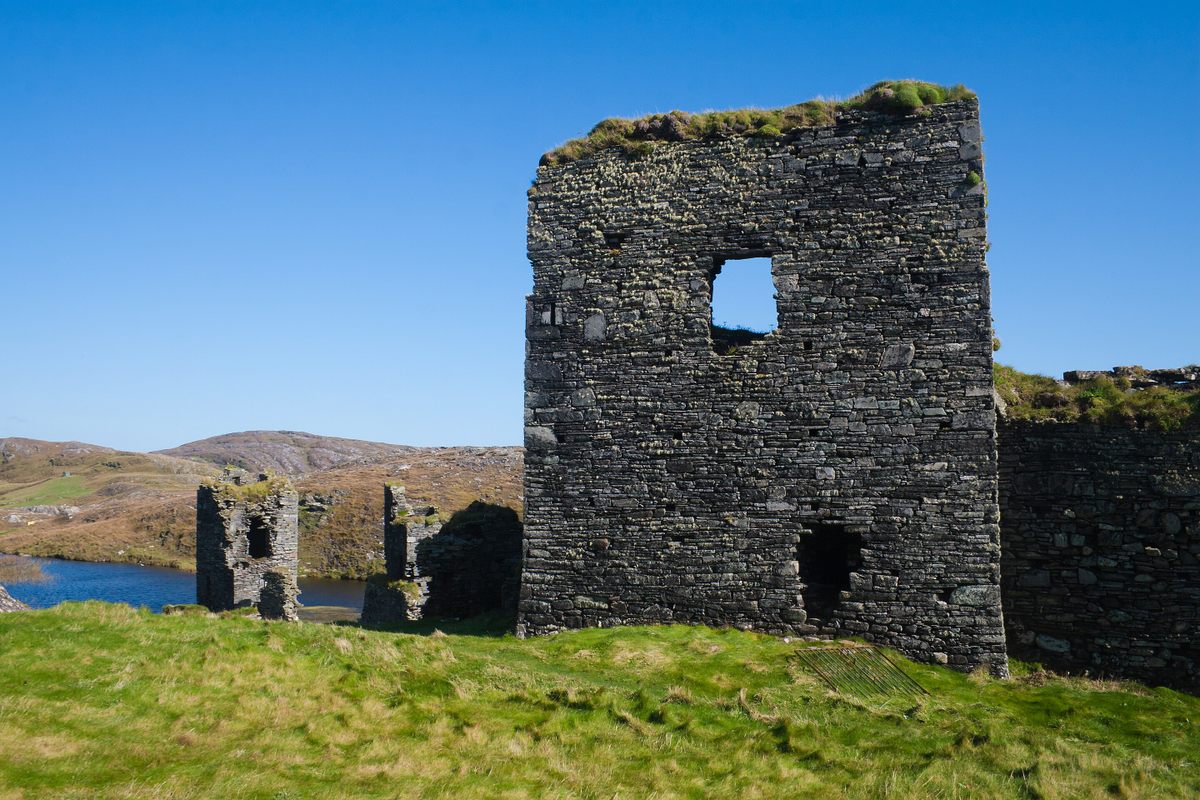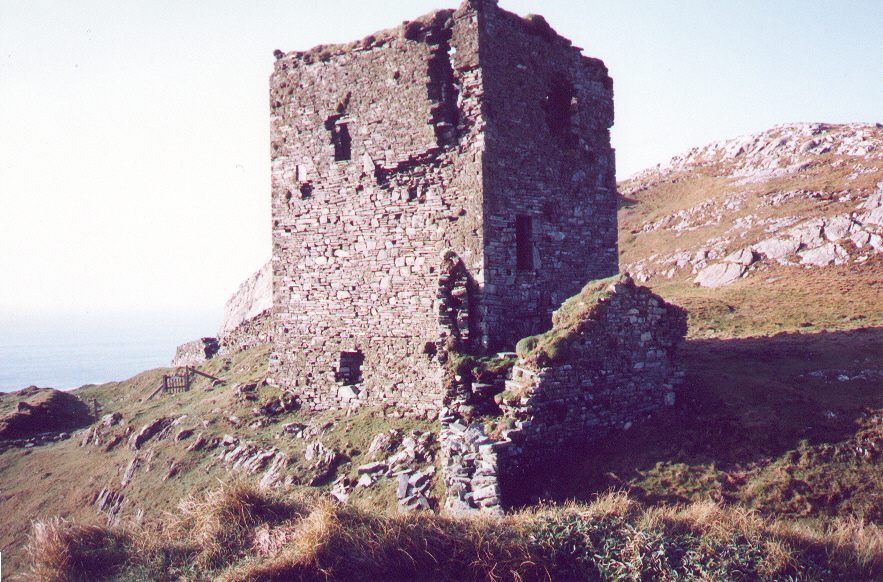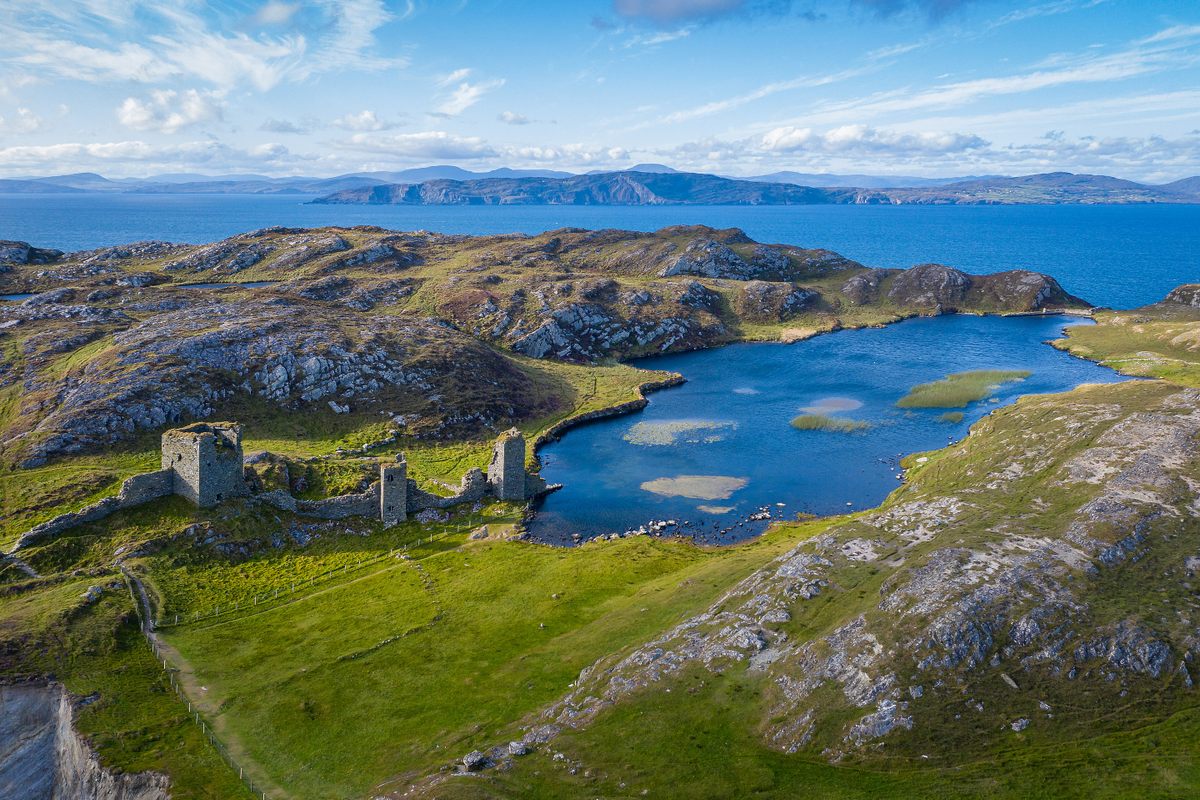Perched majestically atop the rugged cliffs at the northern edge of the Mizen Peninsula, Dunlough Castle, also known as Three Castle Head, commands a striking view over the vast expanse of the Atlantic Ocean in southwestern Ireland. Founded in 1207 by Donagh O’Mahony, it is one of Ireland’s oldest fortresses, showcasing the enduring legacy of Norman architecture and dry stone masonry.

The history of the castle is rich. When the first Norman settlers arrived in Ireland in 1169, the O’Mahonys, though in decline, still held considerable power as the princes of Eóganacht Raithlind, stretching from Cork westward to Mizen Head. Their influence waned rapidly with the encroachment of the MacCarthy dynasty from Tipperary in the early 12th century, diminishing even more as the Normans established control over southern Ireland. Despite their rivalry and alliances with groups like the McCarthys and O’Briens, the O’Mahonys found themselves outmatched by the Normans who followed King Henry II’s initial invasion.

In 1177, King Henry II of England bestowed “the kingdom of Cork” upon Cambro-Norman knights Robert Fitz-Stephen and Milo de Cogan. De Cogan, allocated lands in west Cork, embarked on a westward expansion towards the Atlantic, displacing local families from central Cork. In response, the O’Mahony clan, led by their chieftain Donagh “the Migrator,” settled at the farthest reaches of the Mizen peninsula, erecting Dunlough Castle. Remarkably, the castle remained unassailed, serving as the ancestral seat of the O’Mahonys for over four centuries until it was seized by the British crown in 1627.

Noteworthy for its dry stone construction, Dunlough Castle presents a distinctive architectural feature with its three towers, each exhibiting unique designs, contrary to the customary solitary towers prevalent in the region. These structures, along with the connecting wall, presented a formidable obstacle to potential invaders, although historical records do not document any attempted sieges.
In local belief, the Three Head Castle is haunted by the O’Mahony clan, who are said to have met a violent demise. The castle’s desolate ambiance has spawned local legends, including tales of the spectral “White Lady,” believed to foretell imminent death to those who encounter her.
